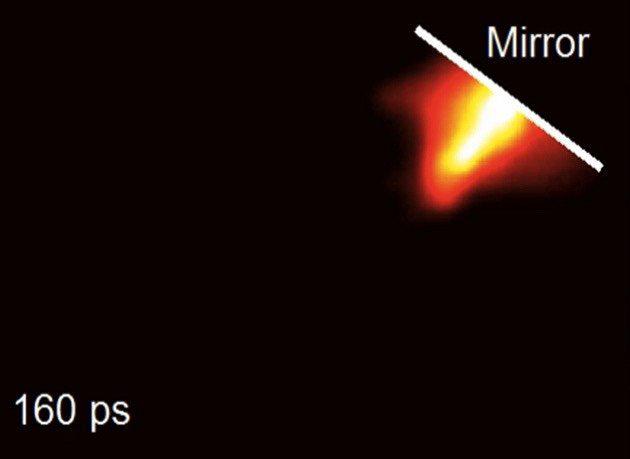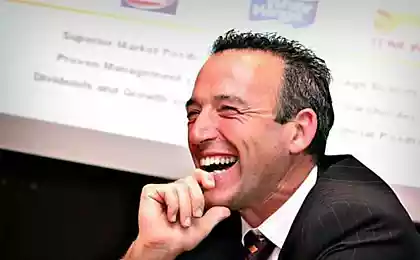1197
New high-speed camera can capture 100 billion frames per second

A team of scientists from the University of Washington in St. Louis (WUSTL) has created perhaps one of the fastest cameras in the world. The system is capable of making 100 billion images per second. This means that the image can be observed even beam of light "in-flight". What is shown in anonsnoy photos - light reflected from the mirror.
The fastest camera, which existed before the creation of the new system could capture about 10 million frames per second. System capabilities were limited bottleneck - speed drive read / write speed.

Now the man first sees the light pulse "in flight." Anyway, so утверждает Head of the research group Wang Lihong (Lihong Wang). The scientist hopes that the achievement of his team will reach new heights in science, to make new, important discoveries.
The system itself is quite complicated, there a large number of optical systems and electronic components.

The central element of the system is the Micro-Mirror digital device (DMD), which holds more than a million microscopic mirrors, each smaller than 7 microns. DMD sizes comparable to the size of a small coin. The light beam transmitted through the lens is long pipe on Micro-Mirror device that encodes an image by reflecting the light beam in a beam splitter, after which the photons enter the chamber slot. Already here photons are converted into electrons, separated by two electrodes. The voltage on the electrodes increases, so that the electrons fall onto different positions at different times.
The data is then transmitted to the charge-coupled device to transfer to the PC. The computer analyzes the received information and scientists receive the output image. Cycle time - only 5 nanoseconds.
The inventors claim that the scope of their discovery is very wide. For example, the system can be used for imaging fluorescent proteins (to demonstrate the occurrence of chemical and biological reactions).
The opening can be used in astronomy, for processing images obtained by orbital telescopes.
Author's abstract of the study can be found here , there is video, which, unfortunately, can not be insert on Geektimes.
Source: geektimes.ru/post/242508/
Also:
- bashny.net/admin/2014/10/20/kachestvennaya-uborka-s-pomoschyu-kliningovoy-kompanii.html
- bashny.net/admin/2014/10/20/segodnya-v-rabote-nahoditsya-mnozhestvo-noutbukov-eto-okazalis-nadezhnye-ustroystva.html
- bashny.net/admin/2014/11/07/sdavat-otchety-onlayn-ochen-udobno-ved-sdelat-eto-mozhno-ne-vyhodya-iz-ofisa-ili-doma.html
Spaceship Orion successfully entered orbit (and successfully returned to Earth)
Tomorrow wake automatic interplanetary station New Horizons























